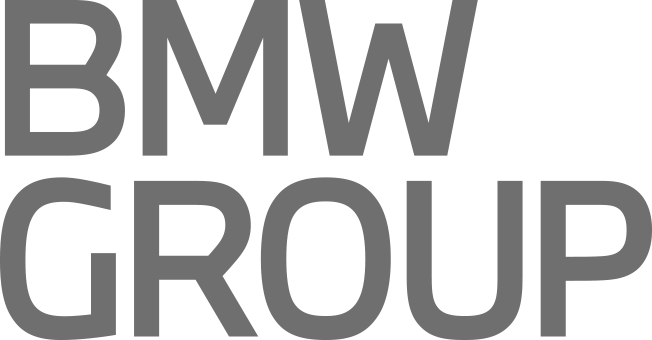Green Supply Chain CITI
Corporate Climate Action CATI
CITI score
22.77
Total Possible Score: 100Total rank
86
Out of 800 total brandsIndustry rank
11
Out of 50 total brands in the Automobile industry
CATI score
49.40
Total Possible Score: 100Total rank
59
Out of 831 total brandsIndustry rank
12
Out of 50 total brands in the Automobile industry
CITI Category Scores Analysis
CATI Category Scores Analysis
CITI Category Scores Benchmarking
CATI Category Scores Benchmarking
-
Mechanism Construction
2.96/ 4 -
Policy Implementation
4/ 4 -
Screen suppliers' environmental compliance
1.2/ 6 -
Encourage suppliers to track their own environmental performance
0/ 9 -
Encourage suppliers to take corrective action and issue public explanations
0/ 15 -
Disclose the ecological and environmental impacts, management targets, and progress of the supply chain
2.17/ 6.24 -
Encourage suppliers to measure and disclose data on resource consumption and pollutant release and transfer
0/ 19.76 -
Energy use and response to climate change
9.88/ 20 -
Promote green supply chain management along the value chain
0/ 8 -
Conduct supply chain information disclosure and due diligence
1.28/ 4.8 -
Disclose green supply chain best practices
1.28/ 3.2
-
Governance:
Policy Construction4.5/ 5 -
Governance:
Mechanism Construction5/ 5 -
Measurement & Disclosure:
Scope 1&2 Emissions8/ 10 -
Measurement & Disclosure:
Scope 3 Emissions5/ 6 -
Measurement & Disclosure:
Product Carbon Footprint4/ 6 -
Carbon Targets Setting:
Scope 1&2 Targets6/ 7 -
Carbon Targets Setting:
Scope 3 Targets3.5/ 9 -
Performance against Carbon Targets:
Scope 1&2 Emission Reduction Progress5/ 6 -
Performance against Carbon Targets:
Scope 3 Emission Reduction Progress1/ 6 -
Climate Action:
Decarbonization in Company Operation7/ 13 -
Climate Action:
Affiliated Company Engagement0/ 6 -
Climate Action:
Decarbonization in Value Chain4.5/ 10 -
Climate Action:
Upstream Supplier Engagement0.5/ 11
CITI Category Scores
CATI Category Scores
Indicator
Score Total scoreMechanism Construction
2.96 4.00-
1.1.1
Announce a commitment to green supply chain development, or integrate green supply chain development into sustainable development strategies
0.40 0.40 -
1.1.2
Establish a management team or appoint someone to promote green supply chain management
0.80 0.80 -
1.1.3
Incorporate green procurement requirements into written documents such as Supplier Code of Conduct
1.60 2.00 -
1.1.4
Publicly disclose contact information and establish a regular communication mechanism with stakeholders—such as the public and environmental organizations—regarding the company’s efforts in environmental protection and climate change response
0.16 0.80
Policy Implementation
4.00 4.00-
1.2.1
Publicly disclose green procurement processes and methods
1.60 1.60 -
1.2.2
Publicly disclose the adoption of automated management tools to dynamically track environmental risks in the supply chain
0.80 0.80 -
1.2.3
Publicly disclose progress in green supply chain management
1.60 1.60
Screen suppliers' environmental compliance
1.20 6.00-
2.1.1
Screen and track environmental compliance of direct suppliers
1.20 1.20 -
2.1.2
Screen and track environmental compliance of indirect suppliers
0.00 1.20 -
2.1.3
Screen and track environmental compliance of raw material supplier suppliers
0.00 1.20 -
2.1.4
Screen and track environmental compliance of chemical suppliers
0.00 0.60 -
2.1.5
Screen and track environmental compliance of wastewater treatment plants
0.00 0.60 -
2.1.6
Screen and track environmental compliance of solid waste transportation, utilization and disposal facilities
0.00 0.90 -
2.1.7
Screen and track environmental compliance of logistics service providers
0.00 0.30
Encourage suppliers to track their own environmental performance
0.00 9.00-
2.2.1
Encourage direct suppliers to track their own environmental performance
0.00 1.80 -
2.2.2
Encourage indirect suppliers to track their own environmental performance
0.00 2.40 -
2.2.3
Encourage raw material suppliers to track their own environmental performance
0.00 1.20 -
2.2.4
Encourage chemical suppliers to track their own environmental performance
0.00 0.90 -
2.2.5
Encourage wastewater treatment plants to track their own environmental performance
0.00 0.90 -
2.2.6
Encourage solid waste transportation, utilization and disposal facilities to track their own environmental performance
0.00 0.90 -
2.2.7
Encourage logistics service providers to track their own environmental performance
0.00 0.90
Encourage suppliers to take corrective action and issue public explanations
0.00 15.00-
2.3.1
Encourage direct suppliers to take corrective action and issue public explanations regarding environmental violations
0.00 3.30 -
2.3.2
Encourage indirect suppliers to take corrective action and issue public explanations regarding environmental violations
0.00 5.70 -
2.3.3
Encourage raw material suppliers to take corrective action and issue public explanations regarding environmental violations
0.00 2.40 -
2.3.4
Encourage chemical suppliers to take corrective action and issue public explanations regarding environmental violations
0.00 0.90 -
2.3.5
Encourage wastewater treatment plants to take corrective action and issue public explanations regarding environmental violations
0.00 0.90 -
2.3.6
Encourage solid waste transportation, utilization and disposal facilities to take corrective action and issue public explanations regarding environmental violations
0.00 0.90 -
2.3.7
Encourage logistics service providers to take corrective action and issue public explanations regarding environmental violations
0.00 0.90
Disclose the ecological and environmental impacts, management targets, and progress of the supply chain
2.17 6.24-
3.1.1
Publicly disclose supply chain data on resource consumption, chemical use, pollutant release and transfer, and impacts on biodiversity
1.13 3.12 -
3.1.2
Publicly disclose targets and performance in reducing supply chain ecological and environmental impact
1.04 3.12
Encourage suppliers to measure and disclose data on resource consumption and pollutant release and transfer
0.00 19.76-
3.2.1
Encourage direct suppliers to calculate and publicly disclose pollutant release and transfer register (PRTR) data
0.00 4.16 -
3.2.2
Encourage direct suppliers to set and publicly disclose targets and progress in reducing resource consumption or pollutant emissions
0.00 4.16 -
3.2.3
Encourage indirect suppliers to calculate and publicly disclose pollutant release and transfer register (PRTR) data
0.00 7.28 -
3.2.4
Encourage indirect suppliers to set and publicly disclose targets and progress in reducing resource use or pollutant emissions
0.00 4.16
Energy Use & Climate Action
9.88 20.00-
4.1
Energy use and response to climate change
9.88 20.00
Promote green supply chain management along the value chain
0.00 8.00-
5.1.1
Empower value chain partners to practice green supply chain management
0.00 0.80 -
5.1.2
Guide value chain partners to track environmental compliance of their own supply chains
0.00 3.20 -
5.1.3
Guide value chain partners to promote accounting and public disclosure of pollutant release and transfer register (PRTR) data by their suppliers
0.00 3.20 -
5.1.4
Guide value chain partners to implement pollution reduction projects in their own supply chains and publicly disclose best practices
0.00 0.80
Conduct supply chain information disclosure and due diligence
1.28 4.80-
5.2.1
Publicly disclose and update supplier list at least annually OR Company has pushed its suppliers to use the Blue EcoChain or other automated methods to track their own environmental performance and commit to provide public disclosures regarding violations in a timely manner, thereby accepting public supervision
1.28 2.88 -
5.2.2
Publicly disclose supply chain environmental information through the Green Supply Chain Map or equivalent maps
0.00 1.92
Disclose green supply chain best practices
1.28 3.20-
5.3.1
Publicly disclose best practices in reducing supply chain environmental risks or impacts through supply chain environmental management
0.80 1.60 -
5.3.2
Publicly disclose Environmental Product Declarations (EPDs), product water footprints, and other relevant information to help consumers understand the full life-cycle ecological and environmental impacts of products
0.00 0.80 -
5.3.3
Participate in establishing recycling systems for waste or end-of-life products, guide stakeholders in recycling activities, and achieve a closed-loop material flow from "resources - products - consumption - recycled resources"
0.48 0.80
Total score
22.77 100The total score of the company's Corporate ClimateAction CATI Index evaluation is converted by a factor of 20% to Indicator 4.1 of the Green Supply Chain CITI Index.
Indicator
Score Total score
Governance:
Policy Construction
4.50
5.00
-
1.1.1
Commitment to decarbonize the automotive industry chain
1.00 1.00 -
1.1.2
Company has developed a transition commitment to stop selling fuel vehicles
1.00 1.00 -
1.1.3
Company has developed a corporate carbon neutrality plan and management system
1.50 2.00 -
1.1.4
Company has incorporated policies regarding supplier energy conservation, emissions reduction, and carbon accounting and reporting into written documents such as the supplier code of conduct
1.00 1.00
Governance:
Mechanism Construction
5.00
5.00
-
1.2.1
Company has integrated climate-related issues into its business strategy and has specific climate-related risk management procedures in place
2.00 2.00 -
1.2.2
Company has integrated climate-related issues into board-level oversight
1.00 1.00 -
1.2.3
Company provides capacity building and financial incentives, and/or initiates innovative projects for suppliers to reduce emissions
2.00 2.00
Measurement & Disclosure:
Scope 1&2 Emissions
8.00
10.00
-
2.1.1
Company has publicly disclosed Scope 1 & 2 emissions data
3.00 5.00 -
2.1.2
Company has publicly disclosed total energy use and energy use by source of energy
3.00 2.00 -
2.1.3
Company has publicly disclosed carbon intensity or energy intensity
2.00 2.00
Measurement & Disclosure:
Scope 3 Emissions
5.00
6.00
-
2.2.1
Company has publicly disclosed Scope 3 emissions
4.00 5.00 -
2.2.2
Company collects supplier carbon emissions data on a regular basis
1.00 1.00
Measurement & Disclosure:
Product Carbon Footprint
4.00
6.00
-
2.3.1
Company has publicly disclosed product carbon footprint
4.00 6.00
Carbon Targets Setting:
Scope 1&2 Targets
6.00
7.00
-
3.1.1
Company has set and publicly disclosed its ongoing Scope 1 & 2 emissions reduction targets or energy consumption targets
3.00 3.00 -
3.1.2
Company has set and publicly disclosed its Scope 1 & 2 carbon neutrality target
2.00 2.00 -
3.1.3
Company has set and publicly disclosed its renewable energy target
1.00 1.00 -
3.1.4
Scope 1 & 2 climate targets are certified or approved by a third party, such as the Science Based Targets initiative (SBTi) or other initiatives
0.00 1.00
Carbon Targets Setting:
Scope 3 Targets
3.50
9.00
-
3.2.1
Company has set and publicly disclosed its ongoing Scope 3 emissions reduction targets
0.00 5.00 -
3.2.2
Company has set and publicly disclosed its Scope 3 carbon neutrality target
2.00 2.00 -
3.2.3
Company has set specific targets to motivate suppliers to set their own emission reduction targets
0.00 1.00 -
3.2.4
Scope 3 climate targets are certified or approved by a third party, such as Science Based Targets initiative (SBTi) or other initiatives
0.00 1.00 -
3.2.5
Set and disclose emission reduction targets or low-carbon procurement targets for steel, aluminum, and battery raw materials
1.50 0.00
Performance against Carbon Targets:
Scope 1&2 Emission Reduction Progress
5.00
6.00
-
4.1.1
Company has publicly disclosed progress made towards its Scope 1 & 2 emissions reduction targets or energy consumption targets
3.00 3.00 -
4.1.2
Company has publicly disclosed progress towards its Scope 1 & 2 carbon neutrality target
0.00 1.00 -
4.1.3
Company has publicly disclosed progress towards its renewable energy target
2.00 2.00
Performance against Carbon Targets:
Scope 3 Emission Reduction Progress
1.00
6.00
-
4.2.1
Company has publicly disclosed progress towards its Scope 3 emissions reduction targets
0.00 3.00 -
4.2.2
Company has publicly disclosed progress towards its Scope 3 carbon neutrality target
0.00 1.00 -
4.2.3
Company tracks its suppliers' target setting progress
0.00 2.00 -
4.2.4
Disclosure of progress on emission reduction targets or low-carbon procurement targets set for steel, aluminum, and battery raw materials
1.00 0.00
Climate Action:
Decarbonization in Company Operation
7.00
13.00
-
5.1.1
Implement non-fossil energy utilization or green electricity procurement projects, and disclose the emission reduction of the projects
2.00 4.00 -
5.1.2
Implement energy monitoring and management projects
1.00 1.00 -
5.1.3
Implement energy efficiency improvement technology application projects, and disclose the emission reduction of the projects
3.00 3.00 -
5.1.4
Company has incorporated emission reduction approaches into the product design process
0.50 1.00 -
5.1.5
Undertake other types of emission reduction projects and disclose the emission reductions of the projects
0.00 2.00 -
5.1.6
Offset through voluntary carbon market mechanisms and disclose the offset amounts
0.50 2.00
Climate Action:
Affiliated Company Engagement
0.00
6.00
-
5.2.1
Affiliates (original equipment manufacturers, joint ventures) have measured and publicly disclosed their carbon emissions at the facility level
0.00 3.00 -
5.2.2
Affiliates (original equipment manufacturers, joint ventures) have set carbon targets, tracked and publicly disclosed reduction progress at the facility level, or received zero carbon factory certification
0.00 3.00
Climate Action:
Decarbonization in Value Chain
4.50
10.00
-
5.3.1
Encourage automotive raw material suppliers to implement corporate carbon management or energy management projects
1.00 0.50 -
5.3.2
Company has promoted steel and aluminum suppliers to launch emission reduction initiatives, and disclose associated emission progress
1.50 3.00 -
5.3.3
Company has promoted battery suppliers to launch emission reduction initiatives, and disclose associated emission progress
1.00 2.00 -
5.3.4
Company has promoted other materials or component suppliers to launch emission reduction initiatives, and disclose associated emission progress
0.50 1.00 -
5.3.5
Company has launched emission reduction initiatives with logistics suppliers, and disclosed associated emission reductions
0.00 1.00 -
5.3.6
Company has established (or coordinated with downstream customers to establish) end-of-life recycling mechanisms to recycle scraped car, used batteries, or other vehicle parts
0.50 0.50 -
5.3.7
Company has conducted emission reduction projects targeting other emission sources along the value chain and disclosed associated emission reductions
0.00 1.00 -
5.3.8
Annually publish best-practice case studies on emission reduction initiatives for steel, aluminum, and battery materials
0.00 1.00
Climate Action:
Upstream Supplier Engagement
0.50
11.00
-
5.4.1
Steel and aluminum suppliers have measured and publicly disclosed their carbon emissions at the facility level
0.00 2.00 -
5.4.2
Steel and aluminum suppliers have set carbon targets, tracked and publicly disclosed reduction progress at the facility level
0.00 1.00 -
5.4.3
Battery and battery material suppliers have measured and publicly disclosed their carbon emissions at the facility level
0.00 2.00 -
5.4.4
Battery and battery material suppliers have set carbon targets, tracked and publicly disclosed reduction progress at the facility level
0.00 1.00 -
5.4.5
Other materials or component suppliers have measured and publicly disclosed their carbon emissions at the facility level
0.50 2.00 -
5.4.6
Other materials or component suppliers have set carbon targets, tracked and publicly disclosed reduction progress at the facility level
0.00 1.00 -
5.4.7
Company employs the Blue EcoChain or other automated methods to empower upstream suppliers to manage supply chain carbon emissions, OR promote large suppliers to publicly disclose product carbon footprint data
0.00 0.00
Total score
49.40 100The Automotive Industry CATI Index has been upgraded based on the CATI 4.0 Evaluation Index, incorporating industry-specific indicators to better reflect the current status of automotive companies’ low-carbon transition. For more details, please refer to the Automotive Industry CATI Evaluation Guidance.



























